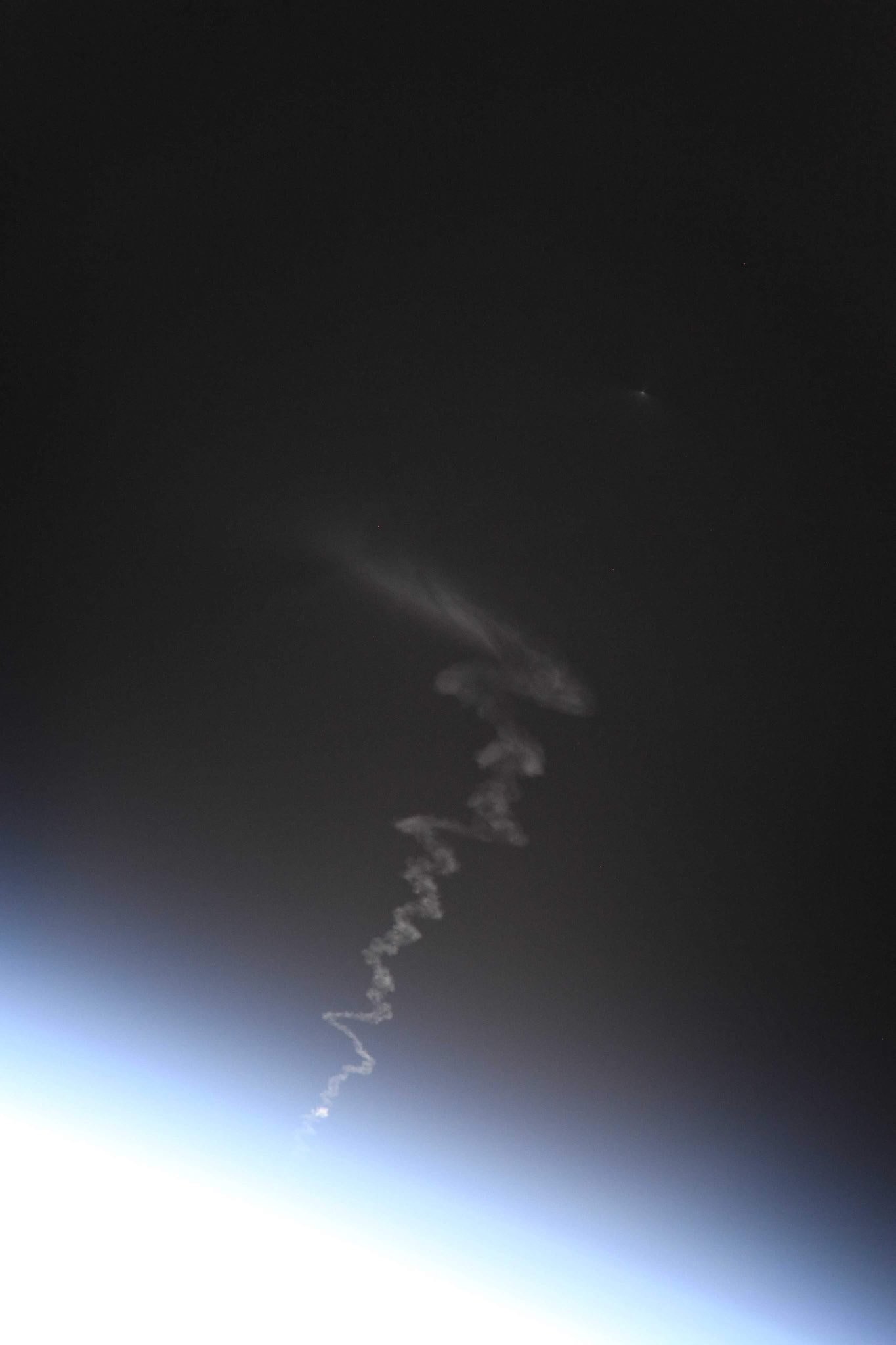[:ja]デービッド・サンジャック宇宙飛行士がISSから撮影したロシアの補給船ソユーズの打ち上げの様子です。宇宙から見るとロケットの噴射煙がこのように見えます。ちなみに、「ロケット雲」と呼ばれる、上空80キロ付近にできる「夜光雲」という珍しい雲の一種は、打ち上げ後にロケットから吹き出した煙が氷の粒になり、朝日が当たって美しい色を織り成すものです。

ちなみに、2018年6月29日のFalcon 9の地上の様子はこちらです。

参考文献: ‘s Tweet
地球俯瞰画像を見る: LiVEARTH
[Earthview Wonders] No.802: Soyuz Launch
Astronaut David Saint-Jacques captured from ISS Soyuz launch from Baikonur Cosmodrome. Rocket launch contrail is left at the high altitude of the Earth’s atmosphere.

When rockets launch, they leave behind a trail of hot exhaust, also called a plume. If atmospheric conditions are right, these billowing plumes can make water condense out of the air, which then freezes into tiny ice crystals. And if the timing is right, these crystals can reflect the sun’s light from far over the horizon like a mirror. The phenomenon is known to scientists as noctilucent or “night-shining” clouds, which form naturally and most frequently over the Arctic and Antarctic.
The launch of Falcon 9 on June 29, 2018 on the ground is as follows.

Reference: ‘s Tweet
See earthview photo gallery: LiVEARTH[:en][Earthview Wonders] No.802: Soyuz Launch
Astronaut David Saint-Jacques captured from ISS Soyuz launch from Baikonur Cosmodrome. Rocket launch contrail is left at the high altitude of the Earth’s atmosphere.

When rockets launch, they leave behind a trail of hot exhaust, also called a plume. If atmospheric conditions are right, these billowing plumes can make water condense out of the air, which then freezes into tiny ice crystals. And if the timing is right, these crystals can reflect the sun’s light from far over the horizon like a mirror. The phenomenon is known to scientists as noctilucent or “night-shining” clouds, which form naturally and most frequently over the Arctic and Antarctic.
The launch of Falcon 9 on June 29, 2018 on the ground is as follows.

Reference: ‘s Tweet
See earthview photo gallery: LiVEARTH[:]